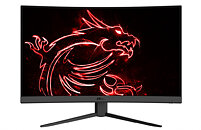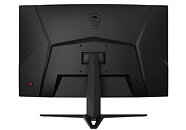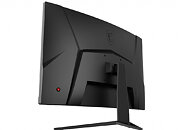Monday, July 6th 2020

MSI Rolls Out Optix G32CQ4 Curved Gaming Monitor: 1500R, WQHD, 165Hz
MSI today rolled out the Optix G32CQ4, a 31.5-inch, 16:9 curved gaming monitor. Featuring a 1500R curvature, this monitor uses a VA panel with WQHD (2560 x 1440 pixels) native resolution, 1 ms (MPRT) response time, 165 Hz refresh rate, 178°/178° viewing angles, and support for AMD FreeSync Premium technology. Other vital panel specs include 3000:1 static contrast ratio with dynamic mega-contrast, 250 cd/m² maximum brightness, and 91.43% coverage of DCI-P3. The panel features a matte finish and anti-glare treatment. Inputs include one DisplayPort 1.2a (needed for FreeSync), and two HDMI 2.0 ports. The company didn't reveal pricing.




9 Comments on MSI Rolls Out Optix G32CQ4 Curved Gaming Monitor: 1500R, WQHD, 165Hz
Bigger numbers apparently impress the uninformed.
Curvature & VA-mode is a match made in heaven.Awful. They are great only if your eyes are centered.
Guys for all the IPS motion clarity(yes, if you are into vrr which I am not), I think this one time we have to gib it to VA.
I kid you not, those 1000R 32:9 panels extend your peripheral vision to be 13% larger than a flat panel at the same viewing distance. 49">55" material. I might have missed on the 32" variants since my calculation was on 27", but 3% is not much more noticeable on the smaller frame sets.
If not for VA, we would have to contend with flat IPS technology with its perfect motion clarity. Some find that dull. VA is much more nuanced. VA is flare, VA is life.
If we allow for LCD compromises, such as final pixel switching at consecutive frames we'll have better control of its weakness.
PS: they will make an extension on VVC to tell the monitor where to interpolate the frame - which the cpu can proxy for the monitor - and that is it. You would never know the difference from frame A to B.
Right now, I'm betting on VVC, but if they say perfectly panning picture I take them at their word.They did this for the new keyframe. The old version was isotropic and not parsing compression targets as wide of freedom.
Oh, I forgot. That is how Nvidia compresses the G-Sync module framebuffer, too. It just stores the difference of values between frames.